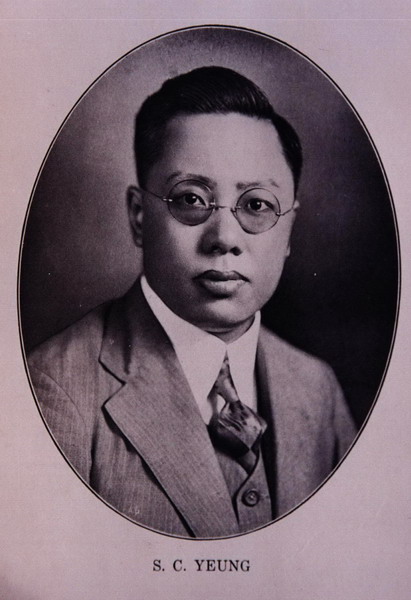Yang Xizong

Yang Xizong, also known as Lishao, was the tenth son of Cuiheng Village’s richest man Yang Qiwen, once studied at Lingnan Secondary School in Guangzhou and Tsinghua School in Beijing, later studied in the U.S., and graduated from Cornell University with a bachelor’s degree in architecture in 1918.
Yang was one of the first architects receiving regular Western education and returning to China in Guangdong or even China. His design career witnessed the modern development of Guangdong architecture. Yang’s representative works include the Guangzhou Central Park (today’s People’s Park), the Huanghuagang Mausoleum of 72 Martyrs, the master plan and first phase design of the Shipai campus of Sun Yat-sen University, mausoleum of the war dead of the 19th Route Army in the Shanghai anti-Japanese battle, Bank of Guangzhou, Overseas Chinese Village, Jianan Hall, Nanhua Building, etc. He also served as chief engineer for municipal construction of Zhangzhou City, Fujian Province, and as a consultant with Shantou Governmentto prepare the Outline of Municipal Planning of Shantou City – a strategic and programmatic municipal master plan, in which the zoning concept of bonded zone, industrial zone and finance zone is still used in the master planning of industrial and commercial central cities today. Yang was good at architectural drawing, and often reflected refined and unique ideas in his drawings.
After the death of Dr. Sun Yat-sen on March 12, 1925, the Funeral Preparation Office solicited mausoleum designs from worldwide architects and artists, and prepared the Regulations on the Solicitation of Architectural Designs for the Mausoleum, requiring that designers must put forward traditional Chinese style designs with a special and memorial nature or express innovations based on the traditional Chinese architecturalspirit. Yang took part in this bid, and summarized in the description of his design in the Plan for the Mausoleum of Sun Yat-sen, “In sum, the designer should combine aesthetics with memorial significance in traditional Chinese style, thus it may be applied appropriatelyto the modernneeds ofthe same kind of architectures.” Among the over 40 designs collected both at home and abroad, Yang’s design won the third place, and judge Ling Hongxun thought that his design was aesthetically excellent and solemn, but was not suited to the mountain form and exceeded the budget.” The designer winning the first place was Lu Yanzhi, who also returned from the U.S.
In January 1926, the Nationalist Government in Guangzhou solicited designs for the monument of Dr. Sun Yat-sen on Guangzhou Republican China Daily, and Yang won the first place, but his design pitifully existed on paper only, becausetwo weeks later, the Nationalist Government in Guangzhou established the Sun Yat-sen Memorial Hall Construction Committee, and decided to construct a monument on the peak of the Yuexiu Mountain and a memorial hall on the piedmont, and solicited designs for the monument and the memorial hall on a newspaper. Among the 26 designs collected, Yang won the second place, being defeated by Lu Yanzhi again. In 1929, Yang served as a member of the Sun Yat-sen Memorial Hall Construction Committee and Director-general of the Management Committee.
The famous Huanghuagang Mausoleum of 72 Martyrs was also planned by Yang. Researchers think that Yang well mastered the original thought of the Chinese bourgeois revolution – nationalism, democracy and people’s livelihood (namely Sun Yat-sen’s Three People’s Principles) – in a gentle narrative technique without any dramatic change, creating a quiet and peaceful atmosphere. Another design by Yang was the master plan and first phase design of the Shipai campus of Sun Yat-sen University in which Sun Yat-sen’s last teachings was stressed in a bell-shaped plane composition and the university’s historical origin was implied in its imagery concept.
Yang made much active exploration in various architectural styles, including eclecticism, neoclassicism and modernism. An architectural historian thought highly of him, saying, “In the modernization process of Guangdong architecture, especially after the 1911 Revolution, Yang is the number one local architect who devoted hisarchitecturalknowledge to serve the locality and made indelible contributions to the development of modern Guangdong architecture.”

